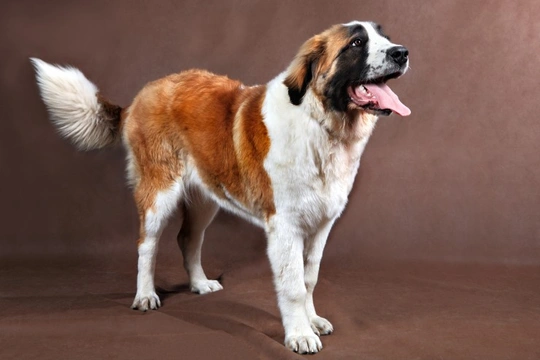
How the right kind of exercise can support large breed dogs joint health
Exercise is of course vitally important for all dogs in order to keep them healthy and thriving, but exactly what type of exercise your dog gets, and how much of it, should be carefully matched to the needs and age of your own specific dog. Understandably, different types of dogs need different amounts and types of exercise, with small breeds benefitting more from short, regular walks, while larger and rangier dogs can exercise for longer and do much more.
The type and amount of exercise that your own dog gets can have a direct impact on the health of their bones, joints and the supporting muscles and ligaments-and this is particularly important for large and giant breeds, which are more apt to suffer from joint problems, particularly as they get older.
In this article, we will look at how the right kind of exercise can help to support bone and joint health in large and giant breeds of dog, and how to assess the appropriate types of exercise for your own dog. Read on to learn more.
How does exercise affect the joints?
Exercise places pressure upon the joints, bones, muscles and ligaments, and provided that this pressure is appropriate to the build of the dog and what they can comfortably achieve, it helps to strengthen the muscles and ligaments that support the joints, and keep the dog’s weight within healthy norms.
Not receiving enough exercise leads to these muscles and ligaments deteriorating and becoming less strong, and so providing less support to the joints-as well as potentially leading to the dog putting on weight, which adds further stress to the joints.
However, receiving too much exercise, or the wrong kind of exercise that places too much pressure and stress on the bones and joints can also prove harmful, leading to damage to the joints that over time, can lead to joint deterioration and additional problems.
It is important to get the balance right between the type and amount of exercise that your dog needs to help their muscles and ligaments to grow strong, whilst avoiding placing too much pressure on the bones and joints too.
Good exercises for younger large breed dogs
Many large and giant breeds such as the Newfoundland and Saint Bernard grow and develop at a much slower rate than smaller breeds, and whilst most breeds are considered to be fully grown by around the age of one, many large breeds continue to grow until they are two or even older.
This means that the joints and bones of such dogs are still growing as well, and until they are fully formed, it is vitally important to ensure that the exercise that the dog undertakes does not place too much stress on their developing joints.
High impact activities that involve a lot of running flat out, leaping, climbing high or wide stairs and jumping or other things that involve a lot of pressure and strain being placed on the joints should be avoided, whilst exercises that include stretching and gentle extensions of the legs and spine should be encouraged.
Never walk a younger dog to the point that they are overtired or struggling, as this too can have a negative impact upon their joint development.
As your dog gets older
Once your large or giant breed dog is fully grown, their joints and bones should be strong, and the muscles and ligaments that support them should be supple, flexible, and fit to stand up to the rigours of adult life.
The main considerations when exercising an adult large breed should be to keep their muscles and joints supple and healthy, and avoid causing damage that may prove to be a problem for the dog in later life.
Your dog will be able to run around more, extend themselves more and jump about within reasonable limits, but high-impact jumps or hard exercise should still be avoided. Encourage your dog to walk as much as they are willing to without pushing them, but still, try to limit a lot of vigorous running on hard surfaces, and jumping very high.
Extra steps you can take
Whilst ensuring that your dog gets the right type of exercise for their size, weight and life stage is possibly the most important consideration when it comes to preserving your dog’s future joint health, it is by no means the only one. It is important to take a holistic view of how you care for your large breed dog and their joints, and as well as exercise, there are a few additional considerations to bear in mind too.
First of all, your dog’s weight has a significant impact upon the stress and pressure placed upon their joints, and so maintaining a healthy weight is vitally important, as an overweight dog’s joints will be exponentially more stressed.
Added to this, feeding a diet that is appropriate for your dog’s size and age, and so provides all of the necessary nutrients for them is vital too, as is speaking to your vet immediately if you have any concerns about the growth and development of your dog’s bones and joints.



